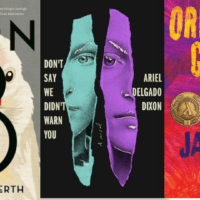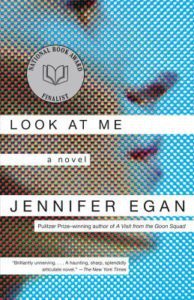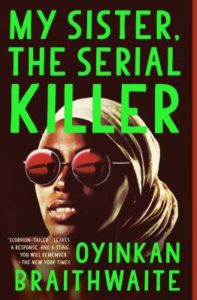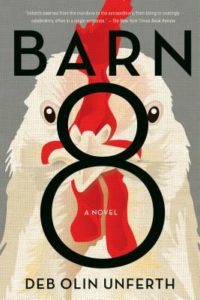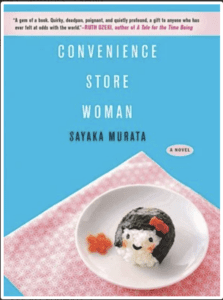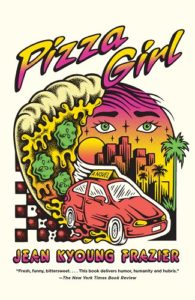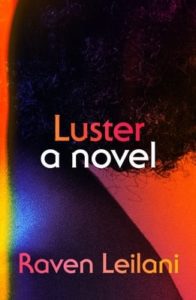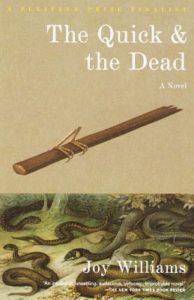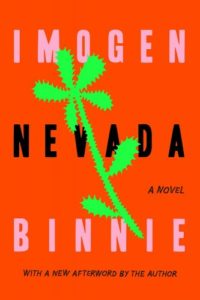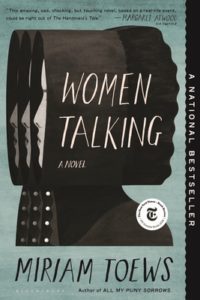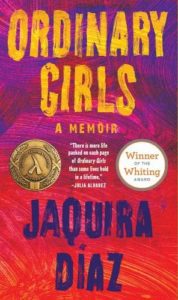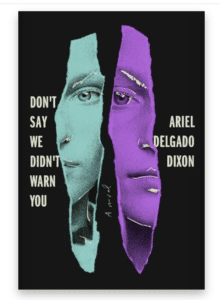Last year, I started carrying a knife.
It’s an efficient little switchblade: all steel, no embellishment, with a clip that secures it snugly to my pocket whenever I leave the house. When I began working on a farm, the utility of a blade within reach was a must. Lines tangle. Fifty-pound feedbags need splitting. Sometimes a patch of thorns clings too tight.
Still, when I was off the clock, I kept the knife close. I liked the feel of metal abutting skin, and the knowledge I could reach for it, flip the lever and in an instant, become armed. There was comfort in this, but also a dark thrill. It made me feel less afraid, like someone with a lethal secret. It made me feel like a bad girl.
Bad girls arrive to us in all forms. The words Bad and Girl are infinitely interpretable. If you’ve been even vaguely online in 2022, you’ve probably heard of the new Showtime series Yellowjackets, following a group of nineties-era teen girls who play for the same New Jersey high school soccer team. When their plane to nationals crash-lands in the Canadian taiga, they must fend for themselves—splitting open archetypes and hierarchies they might otherwise have succumbed to in their civilized, suburban adolescence. The wilderness requires grit. Good girls go bad, bad girls get guns, weird girls get weirder, and witchy girls go big.
When girls unleash their powers, the world may balk, bow, or bite back. Being a bad girl may mean unleashing destructive force, or simply shrugging off expectation. It could mean embracing the calamity of selfhood, or reimagining who that self is entirely. To be bad is to be your own.
The books on this list run the gamut, with heroines waging battle all across the bad girl spectrum. From aspiring eco-warriors and budding psychopaths, to messy queers and supermodels gone rogue: Here are a few (of the many) all-star bad girls punching their way through fiction and beyond.
***
Look at Me by Jennifer Egan
One of my favorite novels of all time, 2001’s Look at Me charts fashion model Charlotte Swenson’s transfiguration from a Manhattan beauty to a car-wreck survivor who requires eighty titanium screws to reassemble her face, rendering her virtually unrecognizable to herself and former circle of elites. A reckoning is in motion for the increasingly self-aware yet unhinged Charlotte, who, at various junctures, falls for a private eye, revisits her busted Illinois hometown where a terrorist plot may or may not be unfolding, and sells her life story to a frighteningly prescient tech company. Charlotte is ruthless, searching, beautiful, and damned—a whirlwind bad girl careening through her second act.
My Sister, the Serial Killer by Oyinkan Braithwaite
Two sisters, tethered by a bloodthirsty secret, test the bounds of family loyalty in this swift, hilariously grim debut. Elder sister Korede can’t seem to catch a break, while her sister, the magnetic Ayoola, goes on a boyfriend-stabbing spree. As the novel’s title hints, Korede plays second fiddle to her murderous sibling, both in public where she is outshone, and also in the shadows, where she serves as accomplice in concealing her sister’s crimes and doing double-duty as their moral compass. Bound by blood and tested by love, these bad girls must reckon with the limits of nature versus nurture, and with one another.
Barn 8 by Deb Olin Unfurth
In this tender, zany heist novel, the bounty is approximately one million chickens. Janey and Cleveland, agricultural auditors in search for their true selves, lead a ragtag crew of jailbreakers, all the while wrestling with questions of animal autonomy, buried grief, the nature of freedom, and the pitfalls of valor. This book is a wild ride, and stars a cast of unconventional characters, the least of whom is Bwwaauk, a chicken who resides in Barn 8, on Happy Green Farm, where the midnight breakout goes down. “Surely the old Janey would be an intern someplace, complimenting some asshole or writing company tweets. Meanwhile, the new Janey was a pirate, a Robin Hood, an outlaw of the best kind, smuggling a few citizen hens to safety. What a relief. She thought she’d never feel alive again.”
Convenience Store Woman by Sayaka Murata
Keiko Furukura knows she is not like everyone else. Though she finds placid purpose in her labor at the local Smile Mart, the world around her is discontent. She is unmarried, oddly dedicated to the tedium of her entry-level job, and uninterested in reaching the societal mile-markers everybody is racing toward. “When something was strange, everyone thought they had the right to come stomping in all over your life to figure out why. I found that arrogant and infuriating, not to mention a pain in the neck. Sometimes I even wanted to hit them with a shovel to shut them up, like I did that time in elementary school.” Keiko tries to split the difference through lies and facades, but remains hounded by, if not curious about, the elusive happiness people seek.
Pizza Girl by Jean Kyoung Frazier
Eighteen, pregnant, and distributing pizza via Ford Festiva to the far reaches of L.A.’s sprawl, Pizza Girl’s Jane is generally unmoved by her impending motherhood. At night, she absconds to a backyard shed to chug beers and escape past ghosts (her late alcoholic father, for instance) as well as the uncertain future (adulthood, expectation, ill-defined dreams). When she delivers a pepperoni and pickle pizza to Jenny, a North Dakota transplant and mom sifting through her own chaos, something begins to shift. Jane doesn’t have to conceal her discontent. Instead, Jenny commiserates, and becomes a source of hope. Women in step with women—mentoring, kvetching, and/or plowing through daily life in tandem—is a saving grace here, as it is in life
Luster by Raven Leilani
So much has been said about this seductive, velvety debut. Edie’s consciousness is rendered combustible here. A slice of one life, at one point in time, made ruthlessly transparent. “When I take the knife, a thought comes to me fully rendered, complete with texture and aftermath: I could, in the right state of mind, murder her and carry on with my life. Really it would be her fault, for inviting a stranger into her house and providing the knife. Her composure is infuriating. I start to tell her that when I fuck her husband, I’m the one who does the fucking.”
The Quick and the Dead by Joy Williams
Unsparing Alice leads the misanthropic charge in this novel as the outspoken head of her twosome of friends. Alice has big opinions and big aspirations, and she makes these known. “She wanted to be extraordinary, to possesses a savage glitter.” To the natural world, Alice is both student and avenger. She considers taking up a BB gun to shoot housecats that go after songbirds. She believes little else is worth a damn but flora, fauna, and her best friend Corvus. “There was a hummingbird impaled on a barrel cactus, flung there by a momentary wind, a dust devil. Above the pierced and iridescent body, a bright yellow flower bloomed. That’s what Alice liked about the desert, its constant, relentless conflict with itself. The desert was unexpectedly beautiful and horrible at once.”
Nevada by Imogen Binnie
Soon to be reissued in Summer 2022, Nevada is cult classic, a beloved trans narrative, and a road-trip novel gone rogue. Maria is an NYC punk with an affinity for booze and pills, but an inability to truly cede control. “She never went to jail, never had the police bring her home, never got caught breaking curfew or went to the hospital or anything. And then she came to New York, paid her rent, had a job, kept her head down, had relationships with people where making the relationship run smoothly was more important than being present in it. Which did not work. It’s clear that being responsible has not been a positive force in her life. It has been fucking everything up.” When she and her girlfriend split, Maria swipes her ex’s ride and heads West, encountering a simulacrum of her younger self in James, a fellow down-and-out searcher marooned in Star City, Nevada. Maria opens up on the road, and the road opens up before her.
Women Talking by Miriam Toews
Something has gone very wrong in a Mennonite colony inside Bolivia. After a series of attacks and abuses by the men of their community, the women meet in secret to discuss their fate. Using conversation at length, Women Talking parses faith, revenge, the will of God, and the will of women. The clock is ticking for the women to collectively decide whether they will stay, go, or fight, but each avenue comes with its own perils. Different generations and sensibilities of course collide, and the tension of what is to become of these women makes an otherwise staid structure feel like an impending collision. ““We mustn’t play Hot Potato with our pain. Let’s absorb it ourselves, each of us, she says. Let’s inhale it, let’s digest it, let’s process it into fuel.””
Ordinary Girls by Jaquira Díaz
This coming-of-age memoir pulls no punches. Expansive in theme yet particular in scope, Ordinary Girls is clear-eyed and relentless, boiling over with rhythm and a rage that teenage girls, especially these girls, know well. “We wanted to be throttled, mangled, thrown. We wanted the violence. We wanted something we could never come back from. Ordinary girls didn’t drive their parents’ cars off the Fifth Street Bridge into Biscayne Bay, or jump off the back of a pickup in the middle of I-95, or set themselves on fire. Ordinary girls didn’t fall from the sky.” Diaspora, mental illness, queerness, the stakes of the street—no subject is safe from Diaz’s incisive gaze. Here, bad girls—her ordinary girls—rule the world.
Of course, to close out this wonderful list, we just had to include Ariel’s novel, Don’t Say We Didn’t Warn You, available now from Random House. – Ed.
Don’t Say We Didn’t Warn You by Ariel Delgado Dixon
A young woman thinks she has escaped her past only to discover that she’s been hovering on its edges all along: She and her younger sister bide their time in a dilapidated warehouse in a desolate town north of New York City; their parents settled there with dreams of starting an art commune. But after the girls’ father vanishes, all traces of stability disappear for the family, and the girls retreat into strange worlds of their own myth-making and isolation . . . With a mesmerizing voice and uncanny storytelling style, this is a remarkable debut about two women who must struggle to understand the bonds that link them and how their traumatic history will shape who they choose to become as adults.
